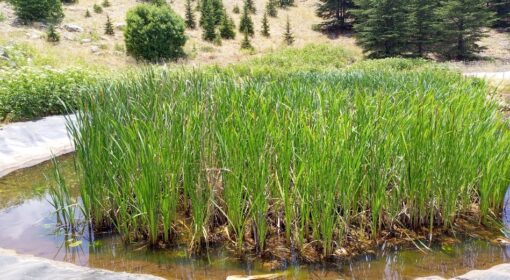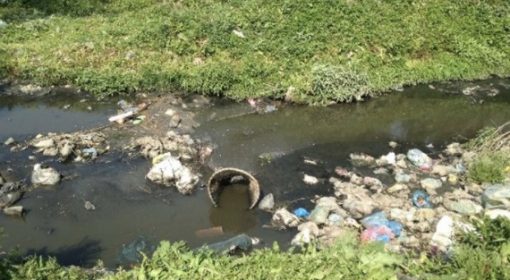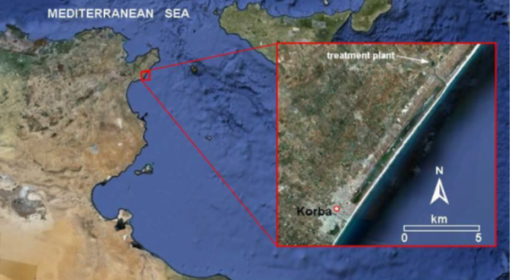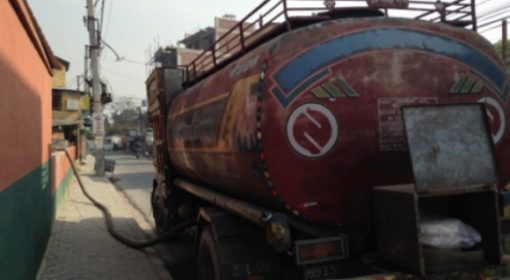By Long Hoang, Katarzyna Kujawa-Roeleveld, Sumit Vij, Indra Firmansyah, Kamonashish Haldar, Tran Thu Trang, Le Minh Truong
Inspirations from flagship wastewater treatment plants in Ho Chi Minh City

The photograph of the maturation pond from the Bình Hưng Hòa wastewater treatment plant – North West of Ho Chi Minh City is cleaning up to 80% of wastewater from a heavily-polluted canal – the Kênh Đen (Black Canal). Using only biological processes to clean up the wastewater, the plant often leaves strong impression on visitors with a beautiful green area and a tranquil lake retaining the treated water by the end of the treatment cycle. This peaceful atmosphere with much green space stands out from the dense urban area surrounding the treatment plant. A stark contrast between the heavily polluted water before treatment, and the clean water draining back into the Đen canal says it all – the technologies are there to handle the wastewater streams coming from households and small-scale factories of the city.
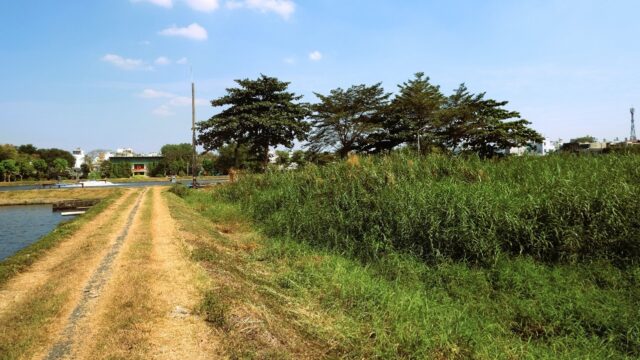
Moving further South-East from Bình Hưng Hòa, one would find another example at the Tân Thuận Export Processing Zone. Established in 1991 without a wastewater treatment plant in the first place, the treated industrial wastewater from this processing complex is now being used for irrigating the greenspace within the installed wastewater treatment plant. Constant monitoring of the effluent shows consistent quality meeting the national standards for surface water quality – according to the operating body of the treatment plant. “We are saving a fair share of the water bill as we now use treated water for irrigating the greenspaces instead of using drinking water” – the manager of the treatment plant proudly explained.
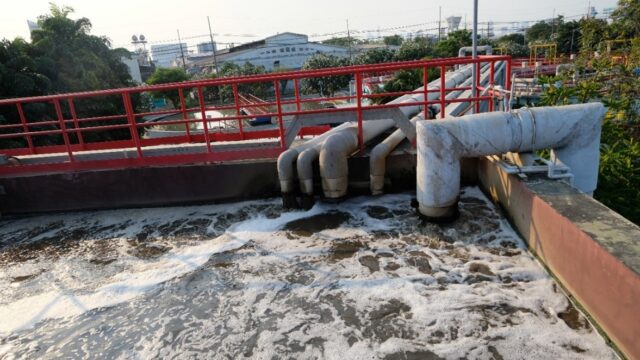
Wastewater management still a major challenge
Ho Chi Minh city, or Sai Gon as many often call their beloved city as a matter of habitual preference, is a water-abundant region. The city is blessed with an annual rainfall of about 2.000 mm and a dense network of rivers, lakes and canals crisscrossing the relatively flat landscape. Flows from the majestic Sai Gon, and Dong Nai rivers support lives of about 9 million people, and one of the largest local economies of the whole of Vietnam. Yet, handling of the constant wastewater stream generated from about 2 million households and 19 industrial zones is a major challenge for the city. To date, only about 13% of the total 1.8 million m3/day of domestic wastewater is being treated, while the figure for industrial wastewater is about 90%. The city has once aimed at treating up to 80% of domestic wastewater by 2020, but this target is inherently unattainable with the city’s current capacity. The increased rate of wastewater treatment would create further opportunities to increase the reuse potential of this urban residue. During the workshop on “Water-Sanitation System Transition IN Asian and AfricaN cities for Enhanced (peri)urban food production through Resource circularity” co-organized by Van Lang University and Wageningen University, experts and stakeholders pointed at some critical barriers to enhance the water and sanitation status of the city. Some of the more predominant barriers include:
- The current policy framework for wastewater treatment and reuse lacks detail and protocols to allow for effective implementation. Reuse of wastewater is prescribed in several laws and regulations, but the lack of specific protocols and water quality standards for specific uses result in a situation where treated wastewater is mainly drained back into the city without much productive use.
- The government, particularly the Department of Natural Resources and Environment (DONRE) and the city’s municipality are primarily responsible for wastewater levy as well as investing and operating wastewater treatment facilities. The city needs to see stronger roles and participation of other players, including private sectors in handling its wastewater.
- The city lacks appropriate space and financial means for installing new wastewater treatment plants, especially the centralized ones.
- Water resources including wastewater are managed and utilized in isolation, with little scope to share and integrate across sectors i.e., urban landscaping, (peri-urban) agriculture, industry, communities and public infrastructures. This highlights the relevance of integrating the water streams across these sector to create additional benefits.
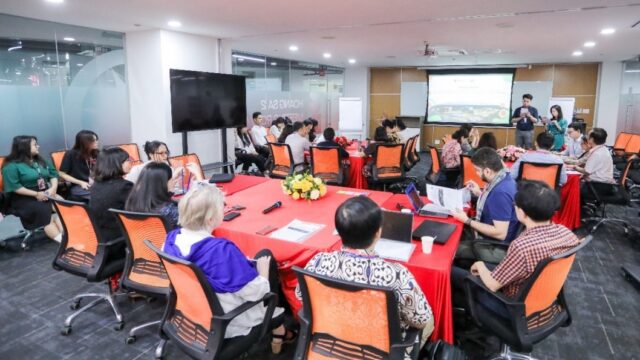
“We are using water from the city’s supply network to grow our clean/healthy lettuce” – owner of a farming cooperative in Phú Hữu Ward, a peri-urban neighbourhood in the eastern side of Ho Chi Minh City. Salad is a big part of the Vietnamese cuisine and consumers are paying utmost attention to hygiene and food safety. To ensure the clean and safe production, the cooperative is paying a water bill of about 1.5 million VND (~45 EUR) per month for a farming area of about 10.000 m2. About 15% of the total production costs is attributed to the water bill – something many farmers in the peri-urban HCMC cannot afford.

Most farmers in peri urban Ho Chi Minh City are using surface water from the rivers and canals surrounding their fields. Surface water has been the traditional irrigation source in HCMC, being blessed with a watery landscape. What now arises as a troubling concern is that pretty much of all surface water in the city is now a cocktail of rainwater, groundwater, and wastewater – much of this is untreated from all different sources. While the current policy and laws instruct otherwise, food in the city is being produced partly from wastewater. Vietnam has developed policy and legal frameworks (e.g. the Water Resources Law, the Environmental Protection Law) for reusing wastewater, however detailed protocols and regulations to put this to practice is still largely missing.
New approaches to wastewater management: integration and resources circularity.
People in HCMC see potential in treatment and reuse of wastewater. Our consulted experts and stakeholders pointed to several potential practical and strategic directions. Practical uses of treated wastewater range from irrigating green space in the city, cleaning of road surface and market grounds, to safely replenishing the rapidly declining groundwater table, all the way to creating industrial symbiosis, for instance heat transfer.
On the strategic level, it is important to shift the current approach to wastewater management, which primarily focuses on treating wastewater, to exploring productive uses and resource circularity in the context of an interconnected urban system consisting of agriculture, industrial, landscape and public infrastructures like parks or green spaces. Integrating solutions and connecting wastewater streams across locations and sectors represents a promising strategy to improve how the city deals with wastewater. Economic gains could be achieved through using of treated wastewater for irrigation in green spaces, or for cleaning up the road network. The city would need better monitoring systems, more detailed protocols and a conducive legal framework for this purpose. Lastly, bridging between the framework, national-level policies and the specific context of HCMC in wastewater treatment and reuse would be crucial[1]. With all the available technologies and high ambition, Ho Chi Minh City is standing in front of great opportunities for creating a cleaner and more efficient water and sanitation system. In this context, embracing the concept and practice of wastewater circularity and integrated solutions would be a highly exciting strategy to lead the way forward.
—
[1] According to the announcement on science and technology implementation tasks in 2024 of the HCMC Department of Science and Technology, HCMC Export and Processing Zones Authority (HEPZA) is wishing to carry out research to develop and propose a policy framework on reusing treated wastewater for irrigation the green spaces, cleaning roads and reusing as input water for other production activities in industrial zones. This contributes to implement Conclusion No. 36-KL /TW on June 23, 2023 of the Politburo on ensuring water security and safety of dams and reservoirs until 2030, vision to 2045.
